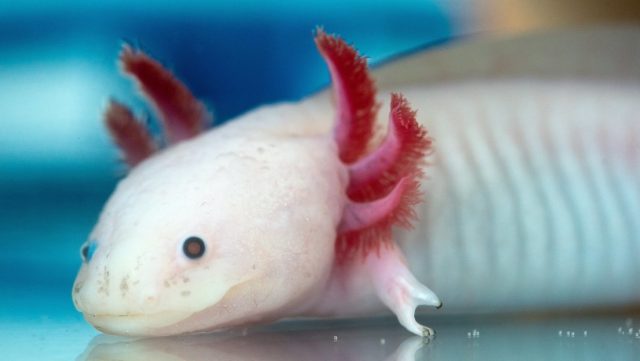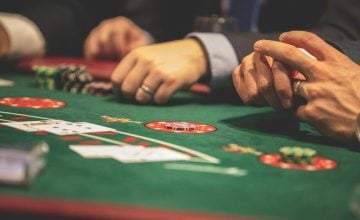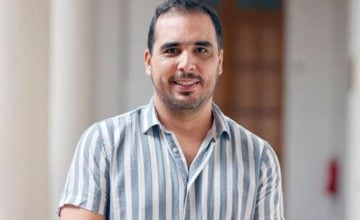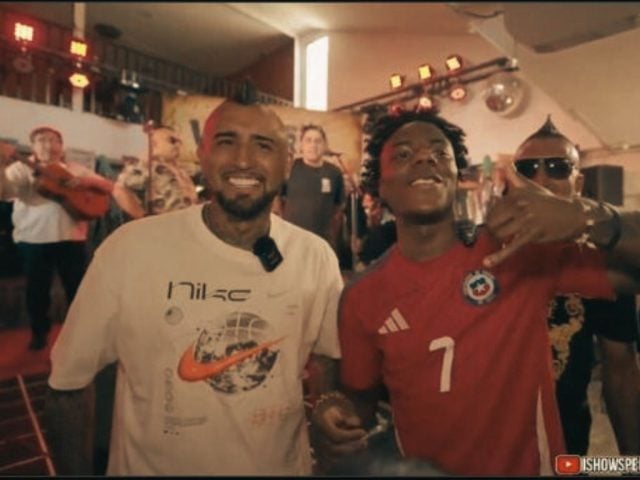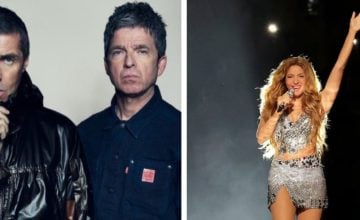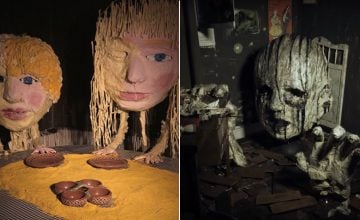A Mexican axolotl baby was found by a family when they were visiting a church in Venezuela. The young of the amphibian – critically endangered – was inside a small bag that was left under an image of the Virgen del Carmen, recognized as the patron of the sea and sailors, within the Catholic belief.
After the discovery of this species, unique in its physical and genetic characteristics, the family called the veterinarian, plastic artist and director of the Fundación Plumas y Colas en Libertad, Grecia Marquís, who explained how they rescued the animal in a conversation with RT.
«When we received it, it was a baby, a tiny animal that was about 7 centimeters tall and had no legs. He has already been with me for a month and his limbs have come out. It is in a juvenile state. It has grown quite a bit and is about 12 centimeters tall», explains Marquís.
The veterinary doctor highlights that during the axolotl’s stay at her foundation, located in a wooded area of Greater Caracas, the small vertebrate has shown that it is docile and friendly. «It eats a lot and does it from my hand, because they are friendly animals. They are carnivores, I give it dried shrimp or pieces of raw chicken that have been frozen before to avoid bacteria. It is very voracious and eats a small spoonful of protein every day».
Marquís, who has 20 years of experience working with animals and wildlife, adds that the axolotl «is one of the most impressive, wonderful and strange animals on the planet», because it is an amphibian that does not metamorphose, as is the case with the Salamander; and it is capable of regenerating parts and tissues of its body.
“It is impressive how it can regenerate its body, making it the only vertebrate capable of regenerating its limbs and tissues from its lungs, heart, eyes, ovaries, spinal cord and brain. It does this thanks to its genetic load, its genome, which is ten times greater than that of humans, hence its incredible capabilities».
Other characteristics of the axolotl
Marquís highlights that the axolotl, whose scientific name is Ambystoma mexicanum, is one of the animals most studied by scientists, since its regenerative characteristics could be key to finding a cure against cancer.
The axolotl is a long-lived animal that can live in its natural habitat for about 10 years and in captivity for up to 20. It can also grow to 25 centimeters and feeds mainly on mollusks, worms, insect larvae, crustaceans and some small fish.
They are oviparous and capable of reproducing once a year with two methods: one sexual and the other asexual. Females can lay 100 to 300 eggs, but not all will hatch. They take between 10 and 14 days to be born.
The National Forestry Commission of Mexico indicates that this species inherited its name from the Nahuatl word, Axolotl, which means water monster, and lives among the Oyamel forests and in the Xochimilco wetlands, where it can be found in streams and rivers. Its presence also indicates that there is clean water and a healthy ecosystem.
The conservation of the axolotl goes beyond the scientific and biological field. There is also an ancestral cultural link with this species as it is considered – according to the UNAM Foundation – as the twin sister of Quetzalcóatl, the good God, of the beautiful and happy life, which represented the union of the earthly plane with the spiritual, for the prehispanic people of Mesoamerica.
In the past, axolotls had a habitat that extended to the lakes of Texcoco, Xochimilco, Zumpango and Xaltocán, in the Valley of Mexico, but the presence of human beings, the destruction of their homes and their extraction to keep them as pets, have generated the threat of extinction that they live today.
What is the main threat for the axolotl?
For Dr. Marquís, the presence of this animal in Venezuela shows that there is at least one person who is dedicated to reproducing it in captivity. «His story is very curious, someone left him there for some reason, and seeing that he is a little animal that is in danger of extinction, I decided to stay with him».
«Reproduction in captivity has managed to stop the red numbers on its extinction», adds the veterinarian and points out that one of the main threats to this amphibian is the destruction of its habitat due to the presence of humans.
Marquís explains that the destruction of natural environments has become a global problem that affects all species. For example – she says – in Venezuela there is currently an indiscriminate felling of trees that is destroying the natural habitat of many species that puts biodiversity and the ecosystem at risk.
«In Caracas and throughout the country there is massive logging that directly affects everyone’s life. When a tree is cut down, raptors lose their nesting places and the opportunity to feed. Furthermore, with the felling of each tree a small world of very valuable biodiversity is eliminated, which kills the life of colonies of insects, invertebrates, nests of birds and mammals such as squirrels, opossums, sloths, porcupines, among others ”.
What does the Fundación Plumas y Colas en Libertad do?
Marquís, who has a master’s degree in Environmental Management, explains that from the Foundation with which she has worked for 15 years, in addition to caring for the different species that arrive with injuries after being rescued by activists, they carry out a campaign to raise awareness about the trafficking of wild animals, the importance of their life in freedom and the conservation of their habitats.
The campaign, called ‘Pet or prisoner’, seeks to generate empathy with animals such as birds, turtles, iguanas, monkeys, snakes, among others, which are often sold by traffickers on the country’s highways. “What we want is for people to feel what a caged or chained animal can experience, when it must live in freedom. A pet welcomes you happily, wagging its tail, running around the house, but not a small animal locked up or with a chain around its neck as monkeys are kept».
Although in Venezuela there are laws that condemn the trafficking and possession of wild animals, Marquís believes that despite the work of the authorities in recent years, there is still much to do. “The entities that regulate and monitor, such as the Guardería Ambiental (Environmental Branch of the Bolivarian National Guard), which already does have a large participation, but it must have a greater presence on the roads to confront animal traffickers. Not only educational campaigns are needed so that people do not buy wild animals, wildlife trafficking has to be punished. There must be punishment and vigilance.
Marquís points out that when the authorities seize animals from traffickers, they should also try to return them to their natural habitats and not lock them in a zoo, where they are deprived of their freedom for life. “From my experience, when I receive these animals that were once free, I evaluate how I can help them to return to freedom so they do not remain in captivity. That is why the most beautiful experiences I have are the liberations (of the animals recovered)».
The doctor emphasizes that people can have extremely strange species as pets. «Once, a huge blue crab and a giant scorpion from the United States were taken to my private practice». She has also treated hawks, owls, macaws, rodents, among other species.
«We have received small owls that fall from their nests and we have to teach them as if we were their parents because they are orphaned. We train them so that they can live in freedom and can survive, because predators like them, the raptors, are at the top of the food pyramid and play a very important role in the ecosystem».
How is their work financed?
The Foundation that Marquís directs works through self-management, since it does not have private or governmental financial support.
The few resources that she manages to care for the animals they rescue are obtained through donations and the sale of paintings and other pieces of art that she makes herself.
«The current economic situation has made the sale of art a bit difficult, but I still do it. I also make calls for people to contribute what they can, because all donations are valuable».
The foundation run by Dr. Marquís is located in La Trinidad, in the state of Miranda, near the so-called Bosque del Volcán, between the municipalities of Baruta and El Hatillo, a place that – she warns – is being damaged by recurrent human activity that have been on the rise to carry out tourist and sports activities.
